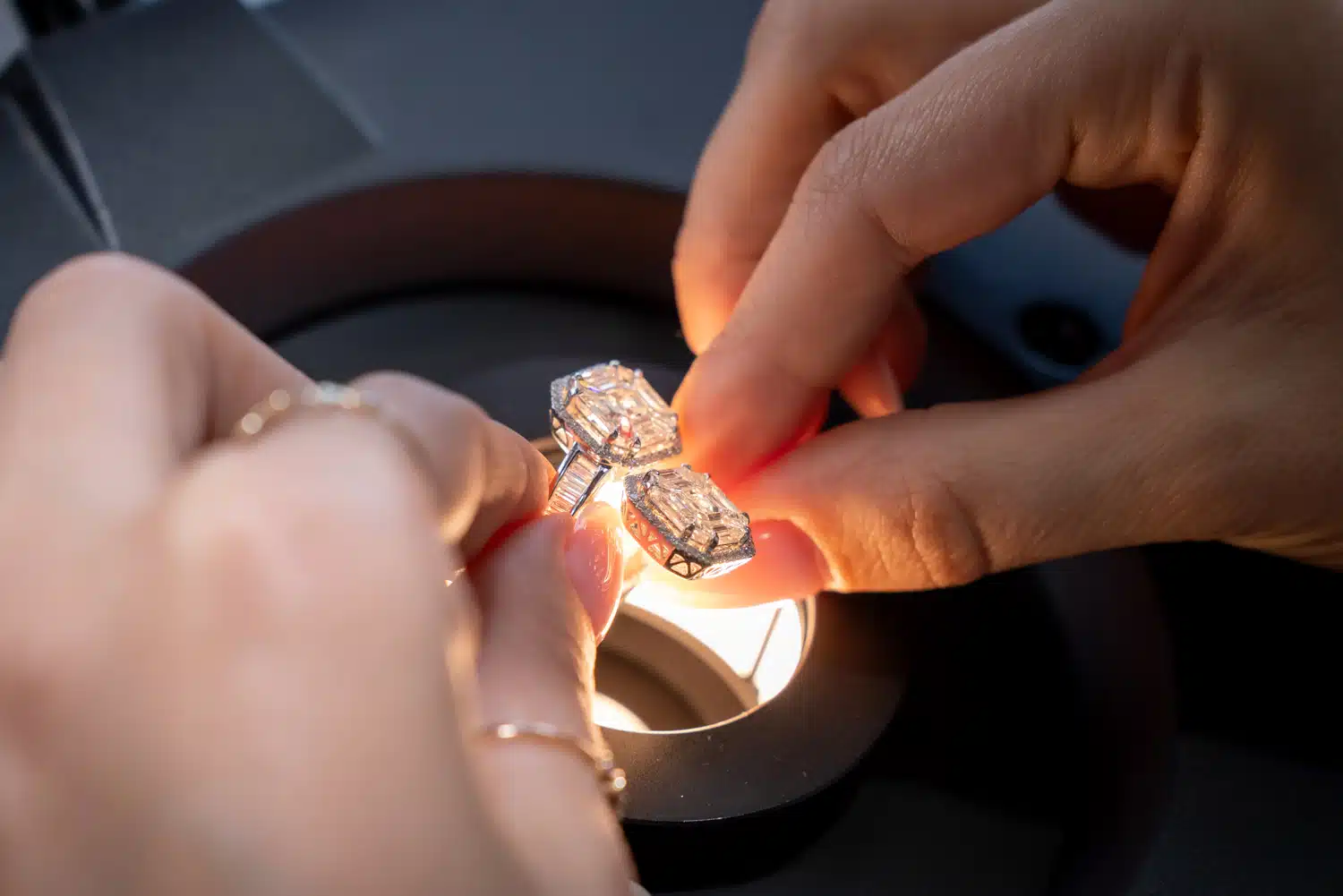Introduction to Lab-Grown Diamonds
Lab-grown diamonds have been making waves in the pearls world for quite some time now. These stones, established in controlled environments, are chemically and physically identical to standard diamonds. However, what precisely could they say they are? Likewise, for what reason should you give it a hesitation? We should dive into the universe of lab-grown diamonds, particularly focusing on the 4Cs – Cut, Variety, Clarity, and Carat Weight – to appreciate what propels these pearls shine so brightly.
What Are Lab-Grown Diamonds?
Lab-grown diamonds, sometimes suggested as synthetic or refined diamonds, are genuine diamonds that are made in laboratories. Unlike their ordinary accomplices lab grown diamonds 4Cs, which structure more than millions of years significant within the World’s covering, lab-grown diamonds are delivered in just weeks using cutting edge innovation. They offer a similar brilliance, fire, and scintillation as ordinary diamonds yet go with a more straightforward backstory.
The 4Cs of Lab-Grown Diamonds
While evaluating lab-grown diamonds, the 4Cs – Cut, Variety, Clarity, and Carat Weight – are the critical criteria to consider. All of these factors expects a crucial part in determining the overall quality and worth of the diamond.
Cut
The cut of a diamond implies how well it has been shaped and faceted. It’s seemingly the main factor in determining a diamond’s brilliance and shimmer.
Importance of Cut in Lab-Grown Diamonds
An especially cut lab-grown diamond will mirror light beautifully, creating a dazzling impact. The cut influences how light enters and exits the diamond, affecting its general shimmer. Whether it’s a round brilliant cut or a lavish shape like an emerald or pear, the precision of the cut will dictate the diamond’s visual charm.
How the Cut Influences Shimmer and Brilliance
A diamond’s cut is assessed on a scale from Perfect to Poor. The better the cut, the more light the diamond will get and reflect. This overhauls the diamond’s brilliance, fire, and scintillation, making it shimmer and shine even more vividly.
Variety
Diamonds arrive in an extent of varieties, from totally vapid to shades of yellow and brown. The shade of a diamond is assessed on a scale from D (boring) to Z (light yellow or brown).
Variety Grading Scale for Lab-Grown Diamonds
Lab-grown diamonds follow a similar variety grading scale as customary diamonds. Dismal diamonds are awesome and important. However, slight tints of yellow or brown can still be attractive and more sensible.
Choosing the Right Tone
The best tone for a diamond relies upon individual inclination and budget. If you’re looking for a classic, timeless look, a D-F variety grade is ideal. For a more budget-friendly option, diamonds in the G-H range offer brilliant worth while still appearing practically dull.
Clarity
Clarity implies the presence of internal or outside absconds, known as inclusions and blemishes. The clarity of a diamond influences its outward presentation and worth.
Understanding Clarity in Lab-Grown Diamonds
Lab-grown diamonds are subject to a similar clarity grading scale as typical diamonds. They can go from Impeccable (no inclusions or blemishes visible under 10x magnification) to Included (inclusions or blemishes visible to the unaided eye).
Typical Clarity Issues and Their Impact
Inclusions like tiny precious stones or gas air pockets can influence the diamond’s clarity. However, various lab-grown diamonds have less inclusions than ordinary diamonds, making them potentially more clear and more sensible.
Carat Weight
Carat weight estimates the size of the diamond. One carat approaches 0.2 grams. The weight influences the diamond’s size as well as its general price.
What Carat Weight Means for Lab-Grown Diamonds
In lab diamonds, carat weight is a significant factor in determining regard. Bigger diamonds are more surprising and therefore more expensive. However, in light of the way that lab-grown diamonds are established in controlled environments, it’s possible to find bigger diamonds at a lower cost stood out from typical ones.
Balancing Carat Weight with Other Cs
While choosing a lab-grown diamond, it’s essential to counterbalance carat weight with the other Cs – Cut, Variety, and Clarity. A bigger diamond with lower clarity or variety might not have similar visual charm as a more unassuming diamond with higher grades there.
Comparing Lab-Grown Diamonds to Typical Diamonds
Lab-grown diamonds are much of the time stood out from typical diamonds regarding the 4Cs. Understanding these differences can assist you with making an informed decision while purchasing a diamond.
Differences in the 4Cs
While lab-grown and typical diamonds share a similar 4Cs grading criteria, their production cycles can influence their characteristics. For instance, lab-grown diamonds might have less inclusions or a more consistent variety.
Cost Comparison
One of the most surprising differences is the cost. Lab-grown diamonds typically cost 20-40% not precisely their normal accomplices, making them an attractive option for those seeking high quality at a lower price.
Benefits of Choosing Lab-Grown Diamonds
Lab-grown diamonds offer various benefits past cost savings. They are an additional ethical and environmentally friendly choice.
Ethical Considerations
Lab-grown diamonds are made without the ethical issues associated with normal diamond mining, for instance, conflict diamonds or exploitative labor practices. Choosing lab-grown is a technique for ensuring your diamond is ethically obtained.
Environmental Impact
The environmental footprint of lab-grown diamonds is significantly more unobtrusive diverged from traditional diamond mining. With less earth-moving activities and less pollution, lab-grown diamonds are a greener option.
How to Pick the Ideal Lab-Grown Diamond
Selecting the ideal lab-grown diamond involves something past understanding the 4Cs. It’s tied in with finding an equilibrium that fits your style and budget.
Tips for Selecting the Best 4Cs
While shopping for a lab-grown diamond, consider your priorities. If shimmer and brilliance are by and large important, base on a high-quality cut. For a classic look, pick a higher variety grade. Balancing all of the four Cs in view of your inclinations and budget will assist you with finding the ideal diamond.
Working with a Confided in Diamond specialist
To ensure you’re getting a high-quality lab-grown diamond, work with a legitimate goldsmith. They can provide certification for the diamond and proposition significant advice on making the best choice.
Conclusion
Lab-grown diamonds are redefining the enhancements market with their ethical production and cost-effectiveness. By understanding the 4Cs – Cut, Variety, Clarity, and Carat Weight – you can go with an informed choice while purchasing a lab-grown diamond. Whether you’re drawn in for their ethical potential benefits or their stunning appearance, lab-grown diamonds offer a compelling choice for any jewels sweetheart. In this way, at whatever point you’re keeping watch for a diamond, consider the brilliance and worth of lab-grown diamonds – you might simply find they’re the ideal fit for your necessities.


